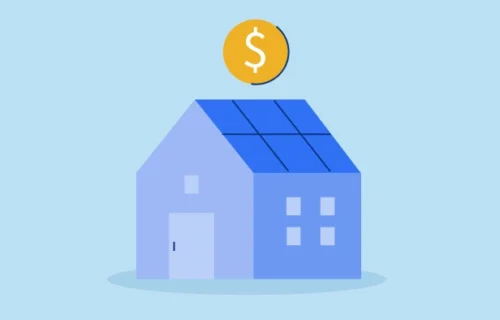
Connect with a Lima One expert today!
If you’d like to know more about this topic or see how it applies to your project, let’s talk.
Choosing a Real Estate Investment Strategy
Why Commercial Real Estate Investors Choose SFR portfolios or Multifamily Investments
Commercial investors looking to purchase residential real estate often find themselves at a crossroads. Should they invest in single-family rentals (SFRs) or multifamily properties? There’s no one-size-fits-all approach. Indeed, both strategies can be highly lucrative.
However, there are several key differences between SFR portfolios and multifamily investments, and so investors need to choose an investment path that fits their specific needs. To help you do this, we outline the pros and cons of investing in each property type below.
Single Family Rental Portfolios
One of the biggest benefits to investing in SFRs is the low barrier to entry. Let’s assume an investor wants to buy a property for $200,000. Most lenders like Lima One Capital will want you to put down 25% for non-owner-occupied properties, or at least end up with a 75% loan to value ratio. This calculation means you have to come up with $50,000 – not an insignificant amount of money, but something that is certainly manageable for most commercial investors. Multifamily properties tend to be more expensive, and therefore require bigger down payments.
SFRs are also a great way for first-time investors to dip their toes into the real estate waters. It allows them to learn the ins-and-outs of the rental property business, from marketing and leasing a property to day-to-day management. Starting small helps to limit potential risk.
Another benefit to owning SFRs is that the pool for both potential renters and later, potential buyers, tends to be strong. SFRs are attractive to tenants, particularly in suburban markets where qualified residents want to live in established neighborhoods with good schools, low crime and robust amenities. Tenants are drawn to having their own yard space, garage parking, and extra square footage.
Meanwhile, if you choose to sell a SFR, the pool of potential buyers is typically robust given demand from both commercial investors and owner-occupants. Investors can usually sell single-family homes rather quickly given the diverse range of potential buyers.
The primary issue with single-family rentals, though, is scalability. Owning one or two, even ten SFRs can be manageable. But scaling a SFR portfolio is much more challenging. Here are cons that some investors see when it comes to SFR investing:
- Managing a SFR portfolio is more time intensive than managing a single, larger building. It takes time to research opportunities, analyze and underwrite individual deals, learn about new markets (if buying SFRs in different geographies), travel between properties for showings and/or maintenance requests, and more. To successfully grow a SFR portfolio, a commercial investor will want to have an excellent team and superior processes in place to streamline these common repeated tasks.
- It is difficult to self-manage a growing SFR portfolio (for the reasons mentioned above), yet there are few high-quality management companies that specialize in SFR portfolios. Those that exist typically charge higher fees per rental than multifamily management companies given the operational challenges associated with managing a disparate portfolio. Multifamily tends to have more sophisticated and robust options to choose from when it comes to third-party management.
- Repair and maintenance expenses tend to be higher, per unit, with SFR portfolios than multifamily investments. Travel time and unique equipment in each SFR are a couple of reasons this is the case.
- SFR portfolios usually take an evolving financing strategy. An investor looking to purchase one or two single family homes may get great terms, especially if putting down a large down payment. However, Fannie Mae and Freddie Mac, the two government-backed mortgage lenders, limit the number of mortgages an individual investor can have at one time to 10. Therefore, anyone looking to scale their SFR portfolio beyond ten units may find it hard to get financing from traditional banks. So investors looking to build their portfolios need to look elsewhere—sometimes to a community bank, or often to a direct lender in the SFR space like Lima One Capital. This is particularly true when an investor wants to pull equity out of one ore more properties and use that leverage to purchase more properties. Many of these lenders have onerous prepayment penalties or balloon structures, so investors must be careful to find programs like Lima One’s Rental30 Premier that offer fully amortized 30-year cross-collateralized financing on SFR portfolios with hidden fees or balloons.
Now, let’s compare and contrast investing in SFR portfolios to investing in multifamily rental properties.
Multifamily Rental Properties
SFRs are a great way for commercial investors to get started, but those looking to scale their portfolio will want to consider multifamily. Multifamily properties can range in size, from five units to 200+ unit apartment communities. Typically, the more units, the more expensive the property will be, which presents a barrier to entry for some investors. That said, those who can overcome this barrier will find there to be tremendous benefits to owning multifamily real estate. As the saying goes, more doors equal more profit, and buying a property with 100+ units is the quickest way to do this.
One of the largest benefits to owning multifamily is that costs are shared across multiple units. Start with transaction costs. When buying a single-family home, you need to pay for an inspection, attorney fees, title insurance, and other closing costs. This happens pretty much each time you add to your portfolio, and even when you do a portfolio loan many of these fees must be repeated. But when you buy a multifamily property, you incur all of these costs one time, and the cost per unit is significantly lower.
The same principle holds true when considering operating expenses such as marketing, leasing, repairs, property management, and maintenance. It is much easier to market and lease several units in one building than it is a portfolio of disparate SFRs. It’s much easier to maintain a single roof above a 20-unit building than it is 20 separate roofs in different locations. Simply put, you gain tremendous operational efficiencies by owning multifamily properties. Larger properties (e.g., those with 100+ units) can even benefit from having on-site leasing teams and on-site property managers, which bring down total operational costs (again, on a per-unit basis).
Multifamily rentals also provide some insulation against vacancy. Regardless of property type, rentals inevitably turn over. When a unit becomes vacant (or related, if a tenant were to stop paying rent for some reason), it is much easier to endure a disruption in cash flow at a multifamily property when you have consistent rents coming in from the other units than it is with an isolated single-family rental property. Multifamily properties generally have stronger cash flow to support debt service, which is critically important in the case of an unexpected vacancy.
Lastly, multifamily properties tend to qualify for better financing terms. Lower interest rates at better terms can result in higher cash-on-cash returns. For example, Lima One’s rates on multifamily bridge loans currently start about 50 basis points lower than bridge financing on single-family properties. Likewise, once you stabilize a multifamily property or complete a value-add rehab, you can get permanent financing from Freddie Mac at low fixed rates. Even a 50-basis point difference can result in hundreds of dollars of positive cash flow when investing in rental property.
That isn’t to say multifamily rentals are a sure-fire bet. There are still challenges with owning multifamily. Here are factors that some investors see as cons.
Steep capital requirements
As noted earlier, multifamily properties tend to be more expensive than SFRs (though they can be on par when SFRs are grouped into portfolios). The steep upfront capital outlay required prices out some commercial investors and forces others to partner when they might otherwise prefer to invest alone.
Quality of tenants
Depending on the location of the multifamily property, the caliber of the tenant might be lower than you might get at an SFR, where tenants are more apt to treat the rental as if it were their own home. Some investors have little appetite for Class B or Class C workforce housing because of this, even though the numbers on a spreadsheet reveal profitable opportunities.
Exit strategies may be limited
Depending on the location, size, and condition of the multifamily property, there may be a limited pool of buyers compared to SFRs, which attract interest from investors and personal homebuyers alike. That means investors may find it hard to pivot if a better opportunity becomes available.
Conclusion
To be sure, both single-family rentals and multifamily can be great investments. Choosing the right one really depends on an investor’s personal objectives, their investment horizon, and the dynamics of the markets in which they’d like to invest. When making this decision, consult with people you trust—whether that be a real estate broker who knows your market, a tried-and-true property manager, or other like-minded investors in your area. And make sure you have a lender like Lima One that can help you take advantage of opportunities, no matter what residential real estate investment strategy you choose.
If you’re ready to fund your next SFR or multifamily deal, Lima One is here to help. Contact us today to learn more about financing options available in your situation.
Subscribe for More Insights
Get the latest industry news & Lima One updates.









